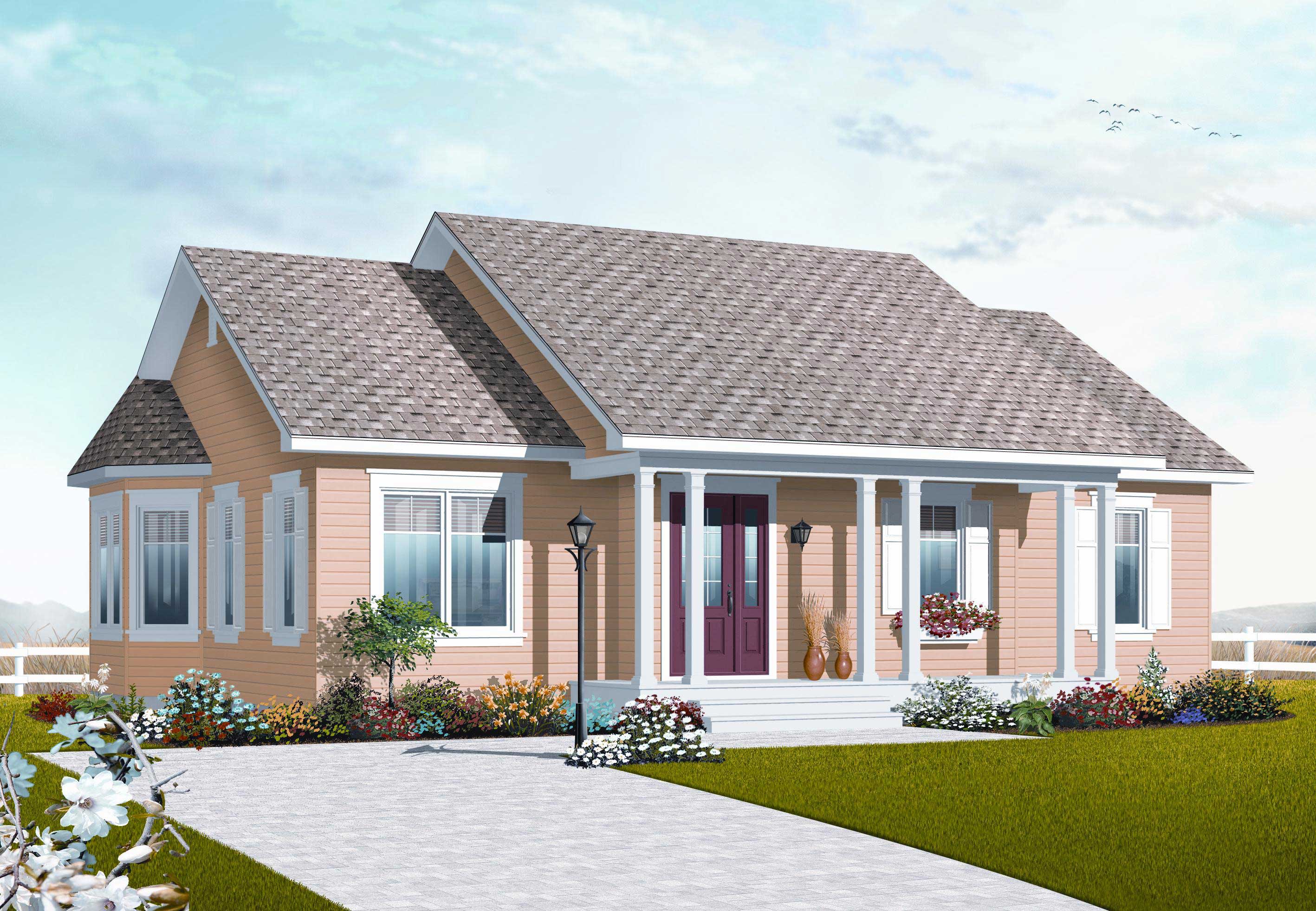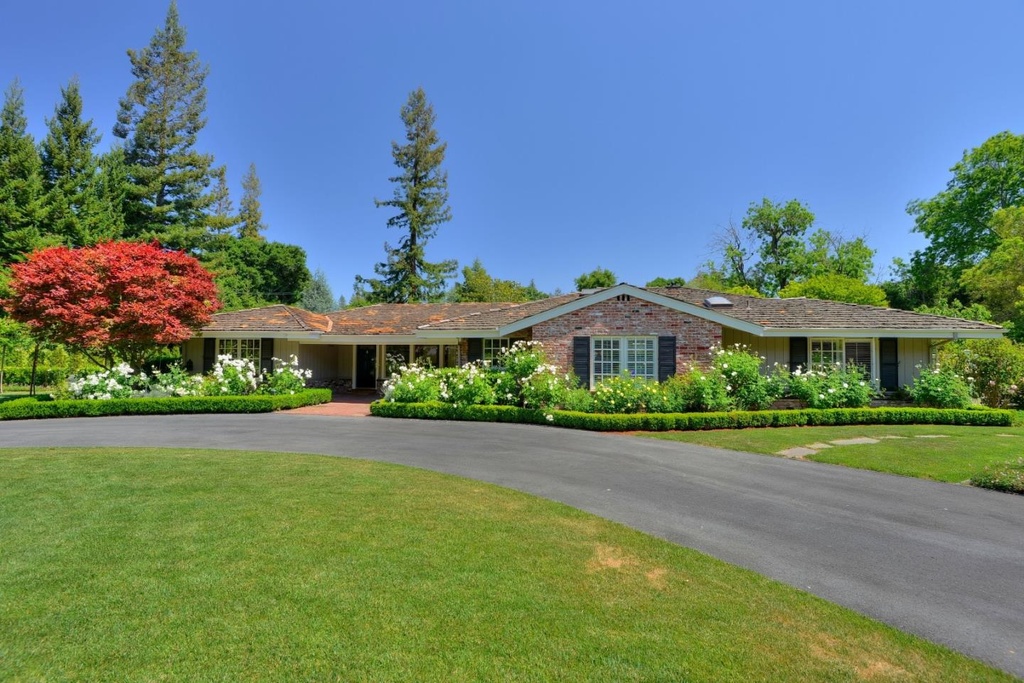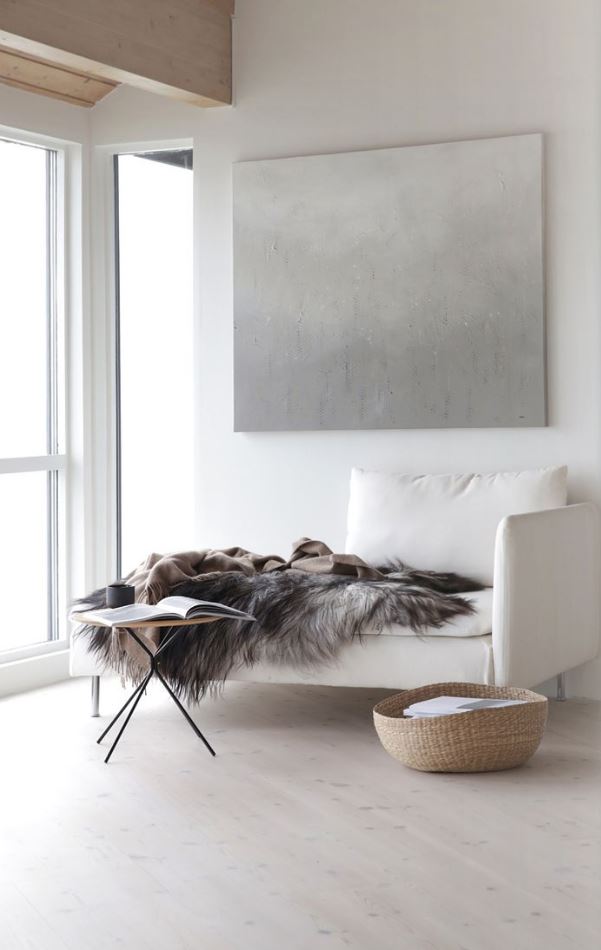Table Of Content
With their minimalist exterior, open-concept interior, and relative affordability, you might just consider bumping a ranch house to the top of your list when house-hunting. Keep reading to learn just what sets rambler homes apart from the rest. We have talked about the single-story design, the commonality of open floor plans, the windows, the patios, and so forth. But what about the actual construction and materials used to make ranch homes, you ask?
How to find ranch homes for sale in your area

Ranch house style was initially created in the Southwest, but they have quickly spread to all across the United States of America. Both options are departures from the status quo, but the streamlined floorplan makes this style feel more consistent with the classic California home. While this type has many of the same features as a California ranch, but are usually smaller and have a simple silhouette.

Roberts Ranch House, Los Angeles, CA
A paint color has the power to set the mood for your space, and since the ranch house style is typically open-concept, the hue you choose here is even more pressing. Constructing a one-story ranch-style house requires a larger space and significant formwork, including foundation, roofing, windows, and various materials. In contrast, a two-story ranch home will involve reduced ductwork, plumbing, and HVAC piping. Ranch homes are also great investments for renovators because of the price point, those open-layout floor plans, and they are relatively easy to raise or, if needed, to raze. HACIENDAS or ranchos dotted the countryside of southern California by the mid-19th century. These low-slung buildings followed the land’s contours and, at the rear, enclosed a courtyard surrounded by a corridor, or open-air hall.
I Was a Contestant On an Early Aughts Reality Show So I Could Be The Hero of My Story - Electric Literature
I Was a Contestant On an Early Aughts Reality Show So I Could Be The Hero of My Story.
Posted: Thu, 17 Aug 2023 07:00:00 GMT [source]
More From the Los Angeles Times
The 1970s-era Santa Ynez valley 3-bedroom, 3.5-bath ranch house and guest house she transformed for a young Los Angeles couple—on a pocket-sized vineyard—is the stuff dreams are made of. Alison is part of the content marketing team and enjoys writing about housing affordability and home interior design ideas. Her dream home is a cottage-style house with a chef’s kitchen and a cozy room to store and play vinyl records. As with all of Cliff May’s prefab homes, the constant connection with the outdoors gives residents of the L-shaped house the unique perspective that there is only a thin line between the inside and outside. Plus, he was doing open plan layouts for guests to meander and mingle long before the no wall movement began in the early 2000s.
Where are rambler style houses popular?
The architect worked closely with Florence advising her on color and fabric selection and much of the furniture was custom built for the home. Donahoe’s sustainable fingerprints are all over this Santa Ynez property, which consists of a handful of renovated outbuildings that create a retreat large enough to host visiting family and friends. Old barns and workshops were repurposed into an art studio and a guest house. Donahoe took the leap and attended the UCLA interior architecture extension course, and then a part-time job working at the Waterleaf shop design studio in Manhattan Beach on the weekends. Now the mother of three calls Santa Barbara home and has shifted her focus to sustainable design. 'When your living spaces are in one large room or adjacent and visible to another, you don’t have to use the same color scheme in each room,' Bankston May recommends.
Types of ranch-style houses
As of 1990, it was abandoned and in a state of disrepair, and covered in graffiti.[2] The site is currently owned by the city of Los Angeles. In early 2016, many of the ranch buildings were demolished, as they were deemed unsafe. A few buildings remain, including the power house, an all-concrete building that once contained the diesel generators. A second look at history—and at these functional homes, now with mature landscape in established neighborhoods—is changing the way we see the American Ranch house.
By then, Los Angeles had completely engulfed the once-ru-ral area, and though the house survived, the ranch was subdivided into an expensive housing development called the Gable Estates. Gable and Lombard truly enjoyed their seclusion and country lifestyle. Yet they also knew how to make use of the ranch to enhance Gable's down-home image.
As the concept of a "drive-in" shopping center was being created and popularized, the ranch style was a perfect style to fit into the large tracts of ranch homes being built. Commercial ranch buildings, such as supermarkets and strip malls, typically follow the residential style with simple rustic trim, stucco or board and batten siding, exposed brick and shake roofs, and large windows. There may be a loft or a semi-finished attic or a basement, but for a house to be considered a ranch, the main floor is the ground floor, there is no real “upstairs,” and that’s that, it’s one story.
Latest Posts
What is astounding is that down to this day, the footprints of these ranchos are still often the same footprints of our modern cities and streets and landmarks. The couple were active partners with Williams in the design of their Malibu home. Their many ideas for how their dream house should be built and decorated were incorporated into the final product.
The houses are indeed partially inspired by the type of home you’d find perched on the wide expanse of a cattle ranch, and the outdoor space makes sense because the California climate begs to be enjoyed al fresco. Built in the early 1960s and recently given a contemporary makeover, the all-white structure is nestled amid a grassy parcel of land spanning almost three-quarters of an acre. While there are a few different spins on the ranch style home, several characteristics tie these architectural styles together, creating the basic concept of the rambler home. In addition to houses in Porter Ranch, there were also 2 condos, 2 townhouses, and 0 multi-family units for sale in Porter Ranch last month.
This map is refreshed with the newest listings matching ranch style in Los Angeles every 15 minutes. The Rindge House was built in 1904 for Frederick H. Rindge and wife Rhoda May Knight Rindge and designed by Frederick Roehrig and E.C. 1986, the Rindge House was listed on the National Register of Historic Places based on architectural criteria. Many of their rancho boundaries are still the boundaries of massive modern real estate parcels, Ethington says, and in Los Angeles County, “about 173 miles of roadway coincide with former rancho boundaries — and 87 miles of municipal” boundaries. And so does Rita Donahoe of Rita Chan Interiors, a Santa Barbara-based designer and founder of Good Ancestor, a design initiative that emphasizes sustainability in home construction and decoration.
I can’t help but think May might be okay with that, utilitarian that he was. Originated in the height of the 20th century – and currently making an indefinite comeback – mid-century modernism boasts slim, boxy silhouette and subdued color palettes. 'The main living areas are centrally located with bedrooms set further away and accessed by a long narrow hallway,' adds designer Darla Bankston May. Additionally, in the Midwest, many people deck out their homes with basements. Not only can this addition make the most of their space – especially as they can’t use their backyard in the colder months – but it can also act as protection against tornadoes.
How a Tired California Ranch House Went from Drab to Fab - ELLE Decor
How a Tired California Ranch House Went from Drab to Fab.
Posted: Tue, 26 Mar 2024 07:00:00 GMT [source]
His family homes Casa de Pedrorena and Casa de Estudillo, as well as his aunt’s lima bean farm on Rancho Santa Margarita y Las Flores in Oceanside, strongly influenced May’s later designs. The sparse geometry of Casa De Pedrorena and Los Flores’ U-shaped adobes, and the Monterey style and form of Rancho Santa Margarita, seemed to May to represent the quintessential indoor/outdoor Southern California experience. May merged these influences into his original ranch house designs of the 1930s, which, postwar, were known as “dream houses” and resulted in the creation of the style known today as the California Ranch.
The new stars of the 1930s—among them Katharine Hepburn, Gary Cooper, Ronald Colman, Joan Crawford, Cary Grant, Bette Davis and James Stewart—usually lived in handsome but hardly extravagant houses. What’s notable but not really surprising about the ranchos, Ethington points out, is how closely they tracked the lands of the Native Americans they displaced. You recognize the names of some of the vast, vanished ranchos that have marked the maps of Southern California for a couple of centuries. The word “rancho” got snipped off along the way, but you know them as Palos Verdes, San Pedro, La Brea and Centinela, San Vicente and Santa Anita. The men who were granted these lands you know, too — names like Verdugo, Sepulveda, Dominguez.
I asked him what he sees when he drives around 21st century Los Angeles, through the masks of centuries and millennia. Windows looking out onto the vineyard steal the show in the guest room. “Another favorite piece is the vintage chest of drawers in the art studio that we salvaged from the original owner’s workshop. I love knowing that in the ’70s, he was using those drawers for his tools to build and create and that today my clients are using them for the same purpose,” Donahoe says. Muted finishes, like unglazed tile and stone that will patina with time, and colors drawn from the surroundings play into the nature. “I wanted the color palette to be calming to reflect the colors found in the surroundings, so we used mostly neutral tones with one big pop of green on the living room sofa, which reminds me of the deep green of the massive oak tree on their property,” Donahoe says.
Fast forward to the Mid-Century Modern Era when May began designing his family’s fourth home, now know as the Cliff May Experimental House. Like May’s family homes where he grew up, The O’Leary House is a U-shaped residence that rambles around a large, walled courtyard, which is intended combine with the indoor living room to create one larrge indoor/outdoor living room. As with all the best May designs, glass sliders open to the courtyard and patios in keeping with May’s intention of integrating the interiors with the exteriors. Passage into the house is from a veranda with several pairs of French doors. The low-slung roof provides protection from the sun and rain, while the furnished veranda serves as transitional living space between indoors and out.

No comments:
Post a Comment